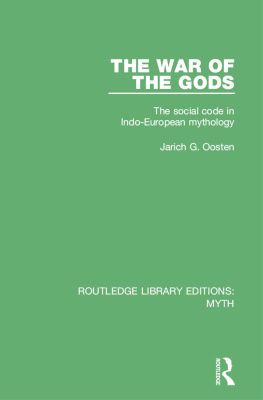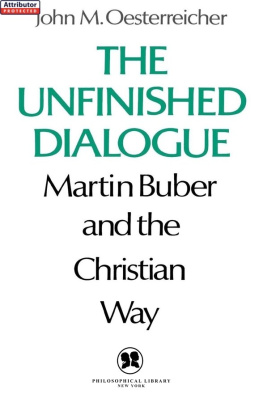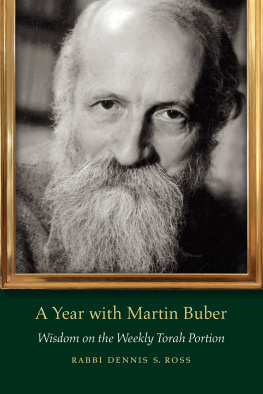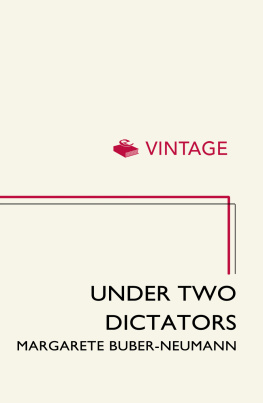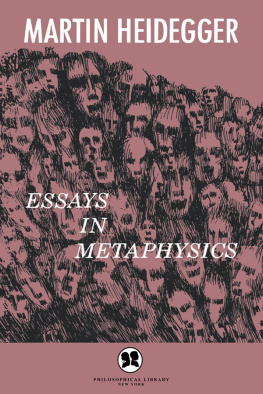
ROUTLEDGE LIBRARY EDITIONS: MYTH
Volume 4
THE WAR OF THE GODS
THE WAR OF THE GODS
The social code in Indo-European mythology
JARICH G. OOSTEN

First published in 1985
This edition first published in 2015
by Routledge
2 Park Square, Milton Park, Abingdon, Oxon, OX14 4RN
and by Routledge
711 Third Avenue, New York, NY 10017
Routledge is an imprint of the Taylor & Francis Group, an informa business
1985 Jarich G. Oosten
All rights reserved. No part of this book may be reprinted or reproduced or utilised in any form or by any electronic, mechanical, or other means, now known or hereafter invented, including photocopying and recording, or in any information storage or retrieval system, without permission in writing from the publishers.
Trademark notice: Product or corporate names may be trademarks or registered trademarks, and are used only for identification and explanation without intent to infringe.
British Library Cataloguing in Publication Data
A catalogue record for this book is available from the British Library
ISBN: 978-1-138-82525-3 (Set)
eISBN: 978-1-315-73033-2 (Set)
ISBN: 978-1-138-84066-9 (Volume 4)
eISBN: 978-1-315-73272-5 (Volume 4)
Publishers Note
The publisher has gone to great lengths to ensure the quality of this reprint but points out that some imperfections in the original copies may be apparent.
Disclaimer
The publisher has made every effort to trace copyright holders and would
welcome correspondence from those they have been unable to trace.
The war of the gods
The social code in Indo-European mythology
Jarich G. Oosten

First published in 1985
by Routledge & Kegan Paul plc
14 Leicester Square, London WC2H 7PH, England
9 Park Street, Boston, Mass 02108, USA
464 St Kilda Road, Melbourne,
Victoria 3004, Australia and
Broadway House, Newtown Road,
Henley-on-Thames, Oxon RG9 IEN, England
Set in Times, 10 on 11 pt
by Electronic Village
and printed in Great Britain
by St Edmundsbury Press Ltd
Bury St Edmunds, Suffolk
Jarich G. Oosten 1985
No part of this book may be reproduced in any form without permission from the publisher, except for the quotation of brief passages in criticism
Library of Congress Cataloging in Publication Data
Oosten, J. G., 1945-
The war of the gods.
(International library of anthropology)
Bibliography: p.
Includes index.
I. Mythology, Indo-European. I. Title. II. Series.
BL660.0571985291.1308903484-22901
British Library CIP Data also available
ISBN 0-7102-0289-X
For my parents who introduced me to the world of mythology
Contents
Figures
This study of the social code in Indo-European mythology is part of a complex research program, CASA (cognitive and structural anthropology), within the Institute of Cultural Anthropology at the University of Leyden. Preliminary drafts of several chapters have been published in the Institutes publication series.
My Leyden colleagues have contributed considerably to the development of this book. I would particularly like to thank Professor Adam Kuper, who has read several versions of the manuscript and made many valuable suggestions, Professor Rob Beekes, who has read the manuscript with the critical eye of a linguist, and Professor P.E. Josselin de Jong, whose comments were always relevant and to the point.
Ank Amesz, Liesbeth Zech, Cora Jongsma and Ans Hassing have typed the manuscript. My thanks go to them for their patience in dealing with all the unfamiliar names and words, and the continual changes that were made in the text.
My parents have supported me in many ways, and this book is dedicated to them.
Finally I would like to thank my wife, Nelleke, for the long evenings spent in reading the text and discussing the ideas developed in this book.
Myths are tales which provide an account of how the world came to be as it is. The past explains the present: the human condition is a consequence of the acts of mythical ancestors. The prototypical myths are thus myths of creation.
In Scandinavian mythology the world began in the interaction of fire and ice. Niflheim was the world of fog and ice in the North, Muspelheim the world of fire in the South. They were separated by Ginnungagap, the great gap between the worlds. A spark flew from Muspelheim into Niflheim and ice melted into Ginnungagap. From the ice grew the giant Ymir, the father of the giants. From his left armpit a giant and a giantess sprouted and his knees copulated and begot a son. Ymir was fed by the cow Audumla, who appeared out of nowhere. While she fed Ymir she licked a man out of the ice. His name was Buri. Buris son, Bor, married the giantess Bestla. Odin, Vili and Ve, the sons of Bor, slew Ymir and created the world out of his body. They shaped the mountains from his bones, the earth from his flesh, water from his blood, heaven from his skull and trees from his hair (Gylfaginning 48). Thus the world originated in murder.
This Scandinavian myth is a variant of a common Indo-European theme: the creation of the world from the body of a primordial giant. In a similar way the world was created out of the body of the first man, Purusa, in Indian mythology (cf. OFlaherty 1976: 270). In the Scandinavian myth children are born as a result of the giants autofertilization. In Indian mythology there is more conventional incest: Brahm copulated with his daughter, the earth, and begot the Agirases, a group of Indian gods (cf. OFlaherty 1976: 26).
An interesting variant on these themes can be found in the Theogony of Hesiod in Greek mythology. At first only Chaos existed. Then Gaia and some other divinities came into being. Gaia brought forth Ouranos, the sky, as her son and her equal. She had intercourse with him and they became the parents of many beings. Most important among them were the Titans, the giants who preceded the gods as rulers of the world. Kronos, the mightiest of the Titans, emasculated and killed his father, who prophesied a similar destiny for him. Although Kronos devoured all his children to escape his fate, he was finally outwitted by his wife, who gave him a stone concealed in a napkin instead of her last son, Zeus. She hid Zeus on the island of Crete. When Zeus was full-grown he made his father vomit up all the children he had devoured, then he defeated the Titans and usurped their power over the world (cf. Theogony 116720). Thus in Greek mythology the beginning of the world was also marked by murder and incest.
Although the myths of creation sometimes deal with the interactions between elements like fire and ice, their main emphasis is on the actions of persons: gods, giants, men, mythical animals, etc.
The distinction between different categories of beings is often vague. Vtra, the snake in Indian mythology, who consumed all the water of the world, was a fearsome monster, but at the same time a son of the creator god Tva and a half-brother of the god Indra, who killed him off (cf. OFlaherty 1980, 102). The huge wolf Fenrir, in Scandinavian mythology, was a son of the god Loki. He could only be bound by magical rope, because the god Tyr, the guardian of the
Next page
